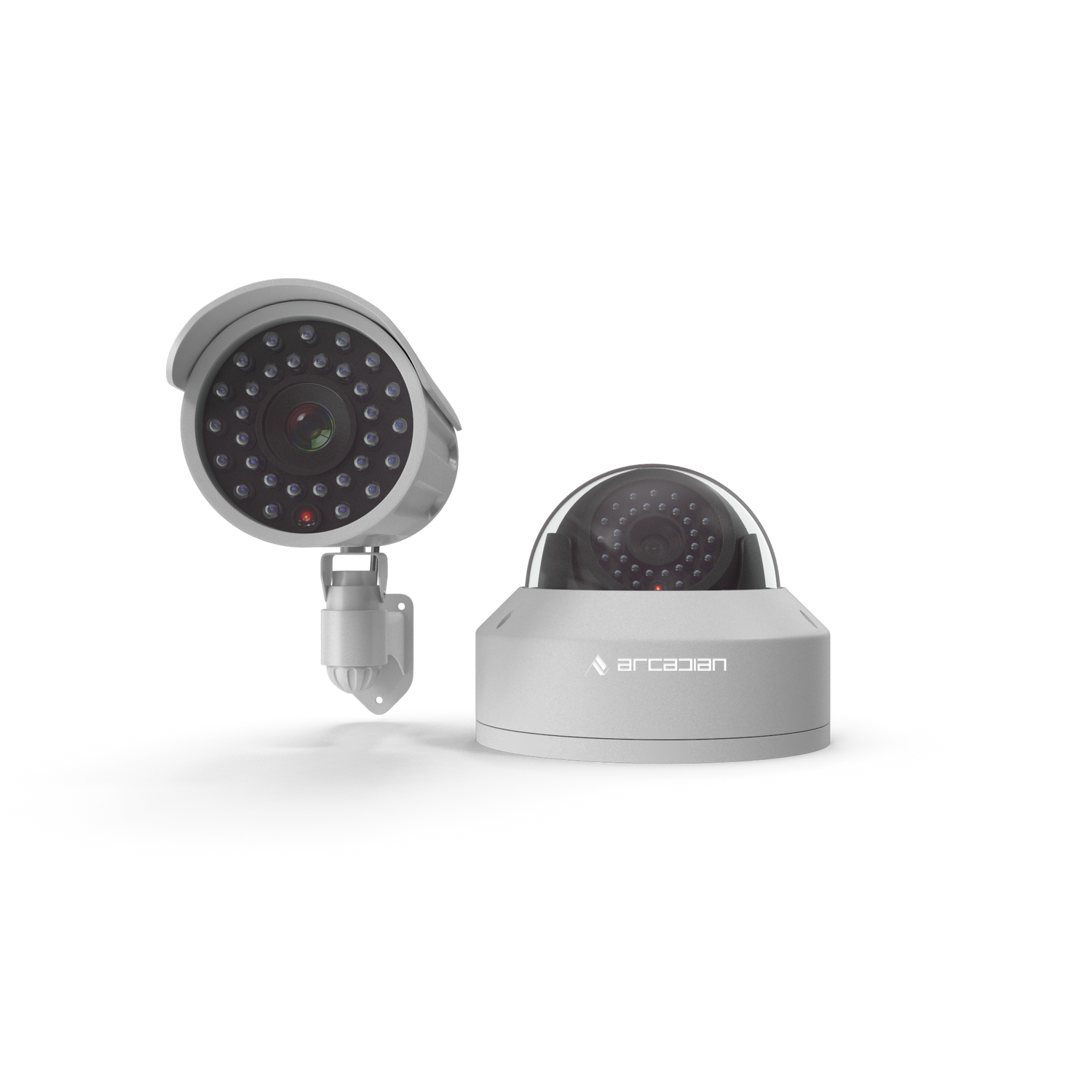What Are the Benefits of Using Cloud Analytics in Security Monitoring?
Introduction: The Rise of Data-Driven Security In the modern security landscape, traditional surveillance systems are no longer enough to keep up with sophisticated threats and expansive operations. Businesses require intelligent, data-driven insights to enhance security effectiveness, reduce risks, and improve operational efficiency. This is where cloud analytics comes into play....

Introduction: The Rise of Data-Driven Security
In the modern security landscape, traditional surveillance systems are no longer enough to keep up with sophisticated threats and expansive operations. Businesses require intelligent, data-driven insights to enhance security effectiveness, reduce risks, and improve operational efficiency. This is where cloud analytics comes into play.
By combining the power of big data, artificial intelligence (AI), and real-time monitoring, cloud analytics transforms raw surveillance footage into actionable insights. In this blog, we explore the key benefits of using cloud analytics in security monitoring and how it empowers businesses to stay ahead in a constantly evolving threat landscape.
1. Real-Time Threat Detection and Prevention
Why It Matters:
Traditional systems often focus on after-the-fact incident reviews, which are reactive and time-intensive. Cloud analytics enables proactive security monitoring by identifying threats as they happen.
Key Benefits:
- Behavioral Analysis: AI detects unusual patterns such as loitering, unauthorized access, or erratic movements.
- Event Tagging: Highlights suspicious events in real-time, reducing the time needed for manual review.
- Smart Alerts: Sends notifications to security teams instantly, enabling quick action to prevent incidents.
Example:
A shopping mall reduced theft by 40% after implementing cloud analytics to flag suspicious behavior in high-traffic areas.
2. Centralized Monitoring Across Multiple Locations
Why It Matters:
Businesses with multiple sites often struggle to maintain consistent security standards. Cloud analytics provides a unified view of all locations, ensuring comprehensive coverage.
Key Benefits:
- Single Dashboard Management: Monitor video feeds, analyze data, and respond to incidents from one platform.
- Scalable Solutions: Easily add new locations or devices without significant infrastructure changes.
- Cross-Location Insights: Compare security metrics across sites to identify trends and optimize protocols.
Stat: Companies with centralized cloud analytics improve incident response times by 35% (Source: Gartner).
3. Enhanced Video Analytics with AI Integration
Why It Matters:
Security cameras generate enormous volumes of footage, much of which goes unanalyzed. Cloud analytics leverages AI to extract meaningful insights from this data.
Key Benefits:
- Facial Recognition: Identify individuals on watchlists or detect repeat offenders.
- Object and Vehicle Detection: Flag unauthorized vehicles or objects left unattended.
- Crowd Analytics: Monitor crowd density and movement patterns to prevent overcrowding or safety risks.
Example:
A logistics provider used AI-powered cloud analytics to detect unauthorized vehicles at loading docks, reducing theft by 25%.
4. Cost Efficiency and Resource Optimization
Why It Matters:
Traditional security systems often involve high upfront costs and ongoing maintenance. Cloud-based analytics reduces the need for expensive hardware and optimizes resource allocation.
Key Benefits:
- Lower Infrastructure Costs: Eliminate the need for on-premises servers and manual storage management.
- Pay-As-You-Go Models: Scale analytics capabilities based on business needs, avoiding unnecessary expenses.
- Staff Efficiency: Free up security personnel by automating threat detection and incident reporting.
Stat: Businesses save up to 40% on security costs by transitioning to cloud-based analytics (Source: Deloitte).
5. Data-Driven Decision Making
Why It Matters:
Cloud analytics transforms raw data into actionable insights, helping businesses make informed security decisions.
Key Benefits:
- Incident Reports: Generate detailed reports to analyze root causes and refine protocols.
- Trend Analysis: Identify patterns in security breaches to predict and mitigate future risks.
- KPI Tracking: Measure metrics like response times, incident frequency, and system uptime for continuous improvement.
Example:
A retail chain used cloud analytics to identify theft patterns during peak hours, reducing inventory shrinkage by 30%.
6. Seamless Integration with Existing Systems
Why It Matters:
Switching to advanced systems should not disrupt existing operations. Cloud analytics integrates easily with current security setups.
Key Benefits:
- Multi-Vendor Compatibility: Works with most surveillance cameras, sensors, and access control systems.
- IoT Connectivity: Combine data from cameras, alarms, and sensors for a holistic security approach.
- Third-Party Tools: Integrate analytics with POS systems, employee tracking software, and visitor management tools.
Stat: Businesses integrating cloud analytics with IoT devices experience a 25% improvement in security coverage (Source: Forrester).
7. Scalability for Growing Businesses
Why It Matters:
As businesses expand, their security systems must grow with them. Cloud analytics offers unmatched scalability without the need for complex upgrades.
Key Benefits:
- On-Demand Expansion: Add new cameras, devices, or locations effortlessly.
- Flexible Storage: Dynamically adjust storage requirements for video data as operations grow.
- Future-Proof Technology: Receive regular software updates to stay ahead of emerging security threats.
Example:
A franchise with 50 locations used cloud analytics to scale its security operations, saving 20% on implementation costs compared to traditional systems.
8. Enhanced Data Security and Compliance
Why It Matters:
Storing sensitive data in the cloud raises concerns about privacy and compliance. Advanced encryption and regulatory adherence are essential for modern businesses.
Key Benefits:
- End-to-End Encryption: Protect video data during transmission and storage to prevent breaches.
- Compliance Readiness: Meet standards like GDPR, HIPAA, and PCI DSS for data protection.
- Redundancy and Backup: Ensure video data is always available, even during system failures.
Stat: Cloud analytics systems reduce data breaches by 50% compared to on-premises solutions (Source: Ponemon Institute).
Comparison Table: Traditional vs. Cloud Analytics in Security
|
Feature |
Traditional Systems |
Cloud Analytics |
|
Threat Detection |
Reactive |
Proactive, AI-driven |
|
Scalability |
Limited by infrastructure |
Flexible, on-demand |
|
Data Integration |
Standalone |
Unified across devices and locations |
|
Cost |
High upfront and ongoing costs |
Subscription-based, scalable |
|
Incident Analysis |
Manual reviews |
Automated, real-time insights |
Key Benefits of Cloud Analytics in Security Monitoring
- Proactive Threat Mitigation: Identify and address risks before they escalate.
- Operational Efficiency: Automate routine tasks and optimize resource allocation.
- Enhanced Decision Making: Use data-driven insights to refine security protocols.
- Scalability: Easily adapt to changing business needs.
- Regulatory Compliance: Ensure data security while meeting privacy standards.
Conclusion: Revolutionizing Security with Cloud Analytics
Cloud analytics is transforming the way businesses monitor and manage security. By offering real-time insights, centralized control, and proactive threat detection, it empowers businesses to safeguard their operations effectively and cost-efficiently.
Ready to upgrade your security monitoring with cloud analytics?
👉 Contact Arcadian.ai today to learn how our advanced solutions can protect your business and optimize operations.
Visit Us on Social Media

Security is like insurance—until you need it, you don’t think about it.
But when something goes wrong? Break-ins, theft, liability claims—suddenly, it’s all you think about.
ArcadianAI upgrades your security to the AI era—no new hardware, no sky-high costs, just smart protection that works.
→ Stop security incidents before they happen
→ Cut security costs without cutting corners
→ Run your business without the worry
Because the best security isn’t reactive—it’s proactive.







